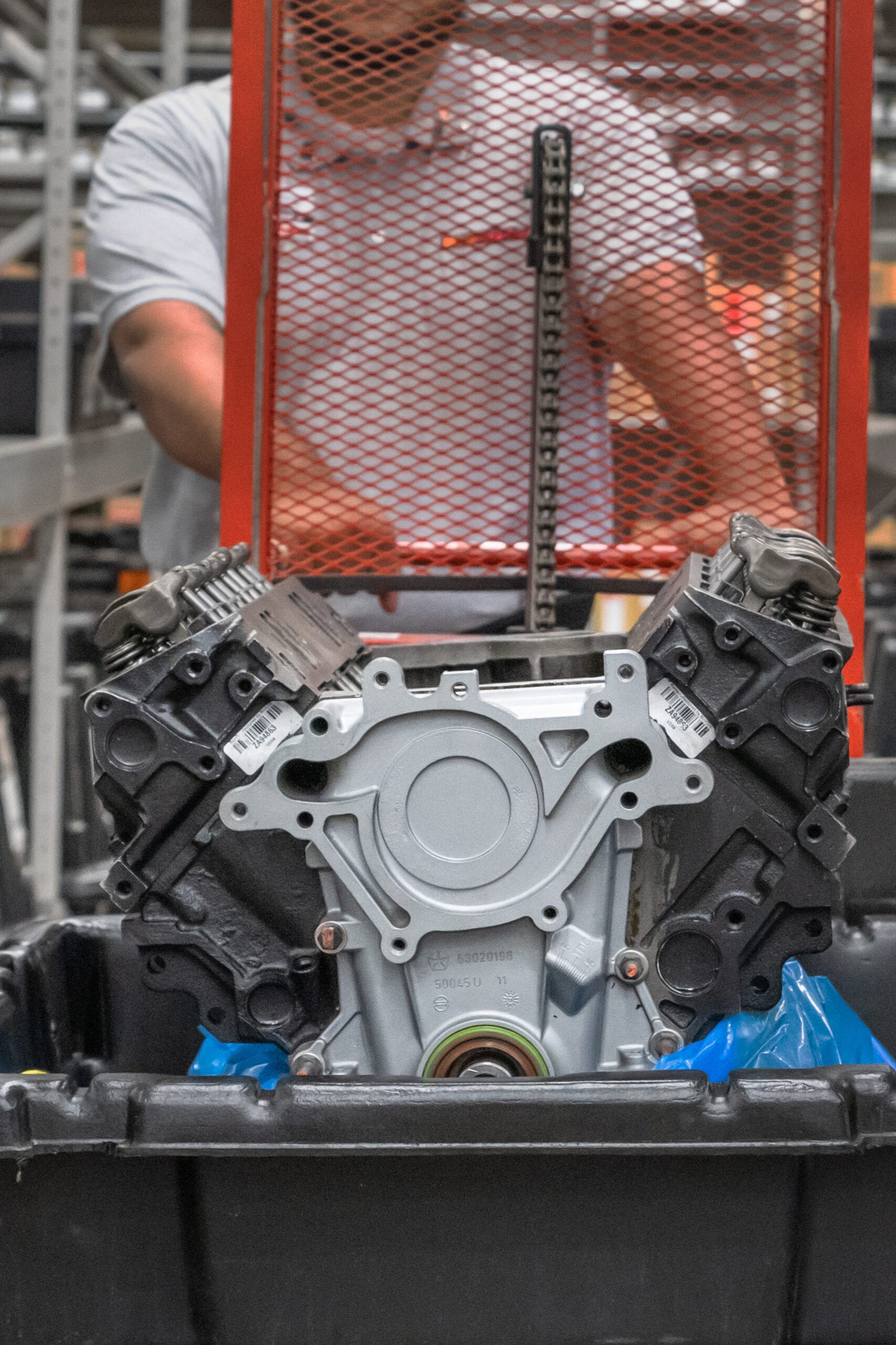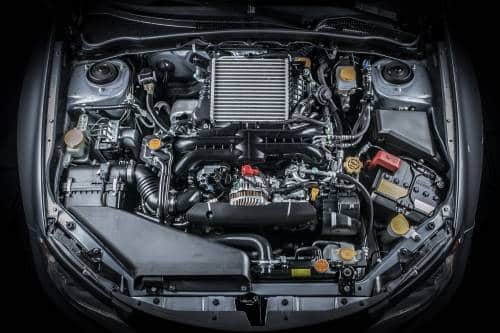Have you ever wondered what makes a Chevy marine engine different from the engine in your car? At first glance, they might seem similar, but these engines are built for very different jobs.
Understanding the key differences can help you make smarter choices, whether you’re thinking about boating or just curious about how engines work. Keep reading, and you’ll discover why these engines aren’t just the same motor in different settings—and how that affects performance, durability, and maintenance for you.

Credit: www.curbsideclassic.com
Chevy Marine Engine Basics
Chevy marine engines are built for life on the water. They share some parts with car engines but differ in key ways. These differences help marine engines handle tough marine conditions. Understanding basic features helps you see why marine engines last longer in water.
Marine engines must resist salt, water, and humidity. They also need to run cooler and avoid rust. These needs shape their design, cooling system, and materials. Let’s explore these basic traits of Chevy marine engines.
Engine Design And Construction
Chevy marine engines have strong blocks and heads. They use special gaskets to prevent leaks from water pressure. The engine parts are sealed tightly to keep water out. The design focuses on durability and smooth power delivery. Marine engines run at steady speeds for long times.
Cooling System Differences
Marine engines use water from outside to cool down. This is called raw water cooling. The water flows through a heat exchanger or directly cools engine parts. Car engines use air or coolant in a closed system. Marine cooling systems avoid overheating in hot engine bays.
Corrosion Resistance Features
Saltwater causes rust and corrosion quickly. Chevy marine engines use special coatings on metal parts. They include zinc anodes that protect the engine by attracting corrosion. Marine engines also use stainless steel or aluminum parts. These materials last longer in salty water.

Credit: www.reddit.com
Car Engine Essentials
Car engines power vehicles by converting fuel into motion. They have parts built to work well on roads. These engines focus on smooth rides and fuel efficiency. Understanding their basics helps to see how they differ from marine engines.
Car engines balance power, size, and weight. They must fit under the hood and run quietly. Their design suits city and highway driving. Let’s explore key features that define car engines.
Engine Architecture
Car engines come in different shapes and sizes. Common types include inline, V-shaped, and flat engines. The layout affects the engine’s balance and space use. Most cars use four, six, or eight cylinders. Each cylinder helps create power by burning fuel.
Engine parts like pistons, valves, and crankshafts work together inside. Precision in design ensures smooth operation and less vibration. Car engines often use overhead camshafts for better control of valves.
Cooling Mechanisms
Car engines need cooling to stop overheating. They use liquid cooling systems with water and antifreeze. The coolant flows through the engine and a radiator. Air passing through the radiator cools the liquid.
Fans help move air when the car is still or slow. Temperature sensors keep the engine at the right heat. Proper cooling helps the engine last longer and run better.
Material Considerations
Car engines use materials chosen for strength and lightness. Aluminum is common for engine blocks and heads. It keeps the engine light and helps heat move away fast. Steel and cast iron are also used for parts that need extra strength.
These materials resist wear and corrosion from fuel and heat. Engineers select materials to balance cost, weight, and durability. This choice impacts engine life and performance on the road.
Performance Comparison
Comparing the performance of Chevy marine engines and car engines highlights key differences. Each engine type suits different needs and environments. Understanding these differences helps in choosing the right engine for your purpose.
Power Output And Torque
Chevy marine engines deliver steady power for long periods. They focus on reliable torque to move boats through water. Car engines prioritize quick acceleration and higher horsepower for road use. Torque in marine engines helps against water resistance. This makes them strong at low speeds. Car engines often peak power at higher RPMs. Marine engines work best at moderate speeds for better control.
Fuel Efficiency
Marine engines are designed to run smoothly on fuel over long trips. They optimize fuel use to avoid waste in tough conditions. Car engines aim for fuel efficiency in stop-and-go traffic and highways. Marine engines often use fuel-rich mixtures to prevent overheating. This can lower miles per gallon compared to cars. However, their fuel systems are tuned for safe, steady operation. Car engines focus more on reducing emissions and maximizing mileage.
Durability In Operating Conditions
Marine engines face harsh conditions like saltwater and humidity. They have special coatings and parts to resist corrosion. Cooling systems in marine engines handle water from the environment. Car engines operate in cleaner, less corrosive settings. They need protection mainly from dirt and heat. Marine engines are built tough to last longer under stress. Car engines focus more on smooth, quiet running and efficiency. Durability differences reflect the environments each engine faces daily.
Maintenance And Longevity
Maintenance and longevity are key factors when comparing Chevy marine engines to car engines. Both need care, but their needs differ due to their unique environments and uses. Marine engines face water, salt, and constant load challenges. Car engines run mostly on roads with changing speeds and conditions. Understanding these differences helps keep engines running longer and better.
Service Requirements
Chevy marine engines need frequent checks on cooling and corrosion. Saltwater can cause rust if not cleaned regularly. Oil changes happen more often to remove moisture and contaminants. Car engines require regular oil changes but less focus on corrosion. Both engines benefit from scheduled tune-ups and filter replacements. Following the right service schedule keeps the engine healthy.
Common Wear Factors
Marine engines often face salt and water exposure that causes rust and damage. Constant high RPMs and heavy loads increase wear on parts. Car engines deal with heat, dust, and stop-and-go traffic wear. Engine belts, spark plugs, and gaskets wear out in both types. Corrosion is a bigger problem for marine engines. Proper cleaning and maintenance reduce wear and tear.
Lifespan Expectations
Chevy marine engines can last 1,500 to 3,000 hours with good care. This equals many years of use on water. Car engines often last 150,000 to 300,000 miles with regular maintenance. Marine engines may need rebuilding sooner due to harsh conditions. Both engines last longer with timely service and proper use. Longevity depends on how well you maintain and protect the engine.
Applications And Use Cases
The applications and use cases of Chevy marine engines and car engines differ greatly. Each engine type is built for specific environments and tasks. Understanding their unique uses helps explain their design and features.
Marine Environment Challenges
Marine engines must handle constant exposure to water and salt. Saltwater causes corrosion, so marine engines have special coatings. They also face high humidity and temperature changes. These engines need strong cooling systems to avoid overheating. Marine engines run at steady speeds for long times. They must be reliable in rough water and waves.
Automotive Usage Scenarios
Car engines work in varied driving conditions. They handle stop-and-go traffic and quick acceleration. Engines must deliver power smoothly for comfort and safety. Cars run on paved roads, so they face less corrosion risk. Engine designs focus on fuel efficiency and emissions. They also support features like air conditioning and electronics.
Adaptability And Modifications
Marine engines have extra parts to resist water damage. They often use closed cooling systems to protect the engine. Some parts differ, like the ignition and exhaust systems. Car engines need fewer modifications for land use. However, some car engines can adapt for marine use with changes. These changes improve durability and performance in water environments.

Credit: www.autozone.com
Frequently Asked Questions
What Makes Chevy Marine Engines Different From Car Engines?
Chevy marine engines are built with corrosion-resistant materials and sealed components. This design protects against water damage, unlike car engines, which lack such features.
Can A Car Engine Be Used In A Boat?
Car engines can be adapted for marine use but require modifications. These include cooling system changes and corrosion protection to ensure safe, reliable operation in water.
Why Do Marine Engines Need Special Cooling Systems?
Marine engines use raw water or closed-loop cooling to prevent overheating. Car engines rely on air and radiator cooling, which aren’t effective in marine environments.
How Does Engine Tuning Differ Between Marine And Car Engines?
Marine engines are tuned for steady torque and low RPMs for consistent boat operation. Car engines focus on acceleration and variable RPM ranges for road driving.
Conclusion
Chevy marine engines and car engines serve different purposes. Marine engines handle water conditions and need special parts. Car engines focus on smooth rides on roads. Both have strengths for their specific uses. Choosing the right engine depends on your needs.
Understanding these differences helps you make smart decisions. Now you can see why these engines are not the same. Each works best where it was designed to run. Keep this in mind when picking an engine for your vehicle or boat.

